Sony WF-SP800N Review: ANC Earbuds Fitter For Fitness
- Sound great and Extra Bass lives up to its name
- Active noise cancellation is almost up to WF-1000XM3's
- IP55 water/dustproofing is great for fitness use
- Battery life is epic
- Comfortable, secure fit
- Charging case is bulky and lacks Qi
- Doesn't quite match ANC/sound of WF-1000XM3's
- Earbuds are a little heavy and protrude from your ears
We may receive a commission on purchases made from links.
Sony shook things up last year when it launched its first set of true wireless active noise-cancelling earbuds, and now the new WF-SP800N are here to pick up that torch. With waterproofing and a lower price tag, they don't replace the WF-1000XM3 but slot in underneath them. Still, there are some very good reasons why the SP800N might be the best fit for you.
ANC for fitness fans
Sony already has a set of fully wireless earbuds with active noise cancellation, the well-reviewed WF-1000XM3. These new WF-SP800N earbuds slot in just beneath them, with a $199.99 price tag versus $229.99. Further down the range, there are the Sony WF-XB700 earbuds, considerably cheaper at $129.99, but lacking ANC.
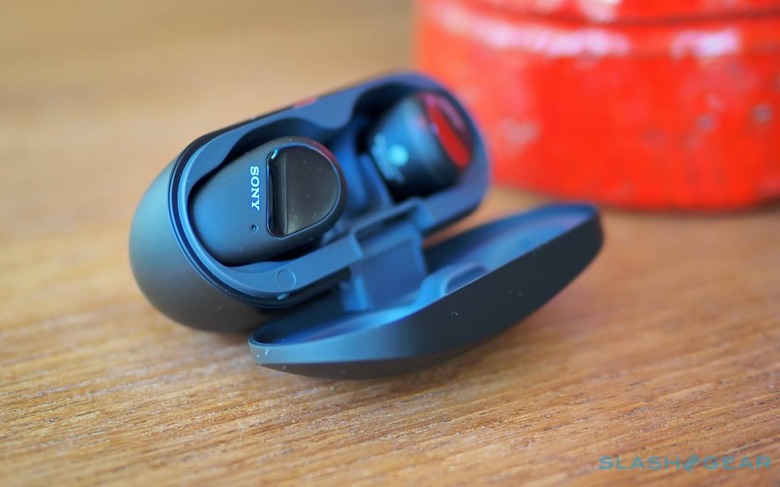
There are a few key differences between the WF-1000XM3 and these SP800N earbuds. Sony's more expensive set uses its flagship QN1e noise cancelling processor, with dual microphones on each 'bud. In contrast, the cheaper WF-SP800N use a simpler ANC processor, with one microphone per 'bud.
The WF-1000XM3 have Sony's DSEE HX audio processing, too, while the SP800N get Sony Extra Bass instead. However the cheaper earbuds are IP55 rated for water and dust resistance, while the "arc supporter" ear loop should help them stay in place while you're working out.
Comfort, fit, and battery
That loop does make a difference, too. Sony includes two different sizes of it, and three different sizes of silicone ear tip. I struggle sometimes to get earbuds to stay in place, but the SP800N nestled in snugly, to the point where I could pogo on the spot and not have them shake loose.
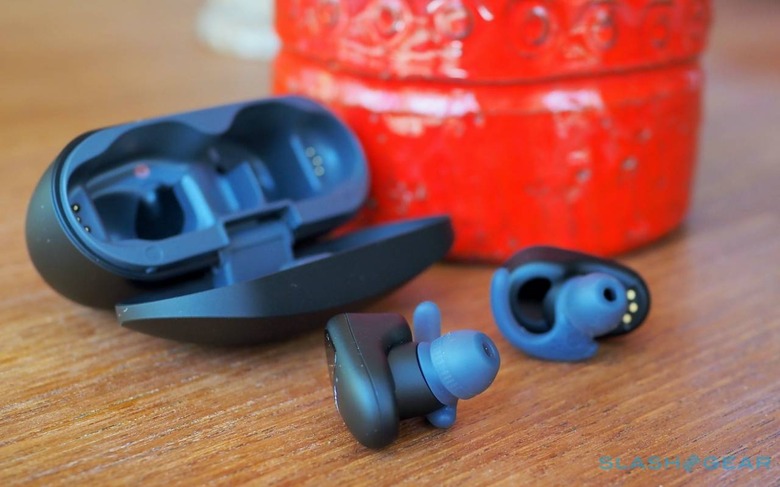
It's not the only benefit. I find wireless earbuds can get uncomfortable over time when they're solely gripping to my ear canal to stay put. Sony's loop system meant to didn't need to do that painful "screwing in" of the eartip just to have it stand a chance of sticking. That's even more impressive when you consider that, at 9.5 grams each, the 'buds are heavier than most rivals.
The supplied battery case charges via USB-C, which I like, and adds a further 9 hours of ANC use to the earbuds' own 9 hours of battery life. They're healthy numbers: while a set of AirPods Pro with a fully-charged case will give you 24 hours of listening in total, Sony's earbuds each last twice as long as Apple's do.
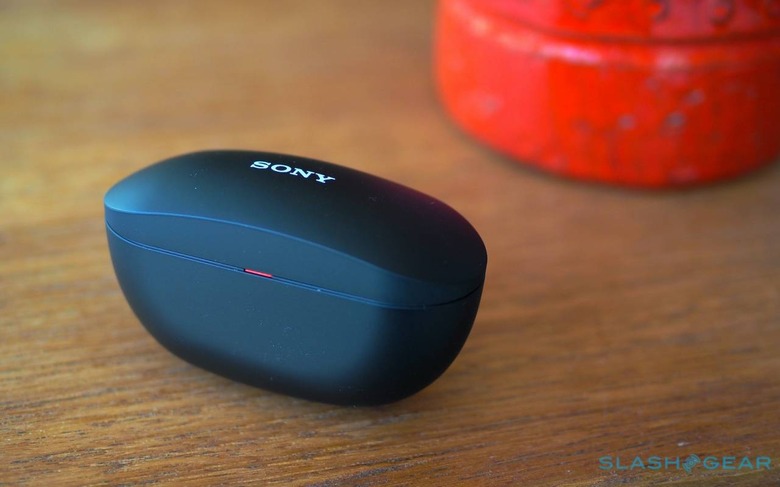
What I'm less enamored with is the size of the Sony case, and its construction. It's definitely big, a chunky black or blue puck of a thing, but the plastics feel noticeably cheaper than those Sony used on the WF-1000XM3's charging case. The lid and its hinge are particularly underwhelming, which is a shame because the earbuds themselves feel sturdy and up to handling an accidental drop. You also don't get wireless charging in the case.
ANC and sound
Active noise cancellation can be a matter of taste. Some people prefer as close to complete isolation from the outside world as they can get; others find that a little relentless. Different ANC earbuds and headphones are tuned differently, and Sony adds to that complexity by offering adjustable ANC levels that you can control either manually or leave up to the SP800N's themselves.
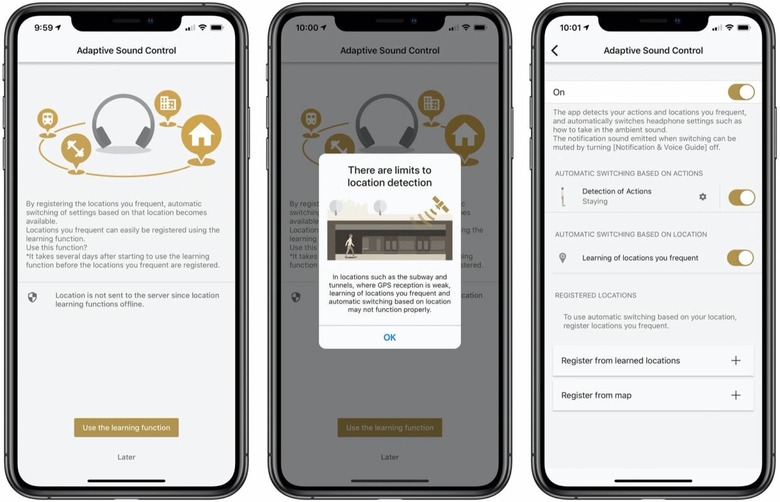
I was pleasantly surprised by how well the new earbuds' ANC held up, even compared to the more expensive WF-1000XM3's. My go-to test would normally involve jumping on a plane, but with that off the agenda for the moment I settled for background music, the sound of a robot vacuum cleaner doing its thing, and other general peripheral noise.
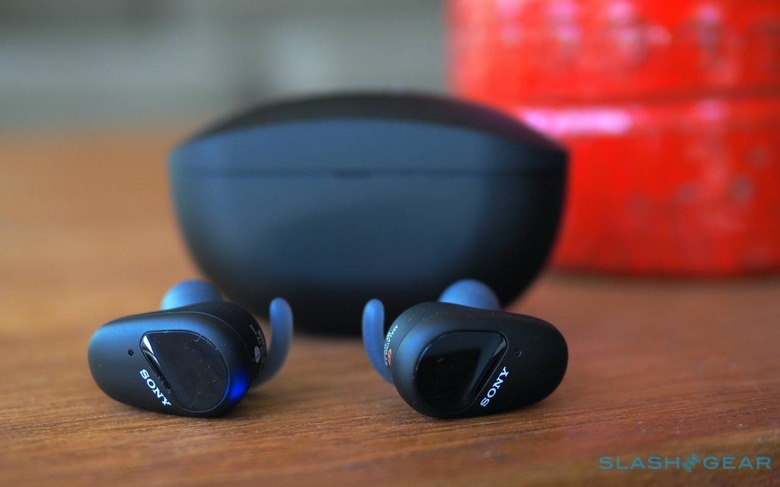
With nothing playing through the earbuds, side-by-side with the WF-1000XM3's the new SP800N weren't quite as effective at canceling out background sound. However they were very, very good all the same. Once you start playing music through them, meanwhile, the differences are even tougher to identify.
That's partly because the SP800N lean in on the low-end, with Sony's Extra Bass doing exactly what the name suggests. Obviously how happy you'll be with that depends on the sort of music you like, but the lashings of bass do help close the gap with the more expensive, advanced ANC on the other Sony 'buds. If you want you can tame it a little using the EQ settings in Sony's Headphones Connect app; there are several presets, or you can make your own.
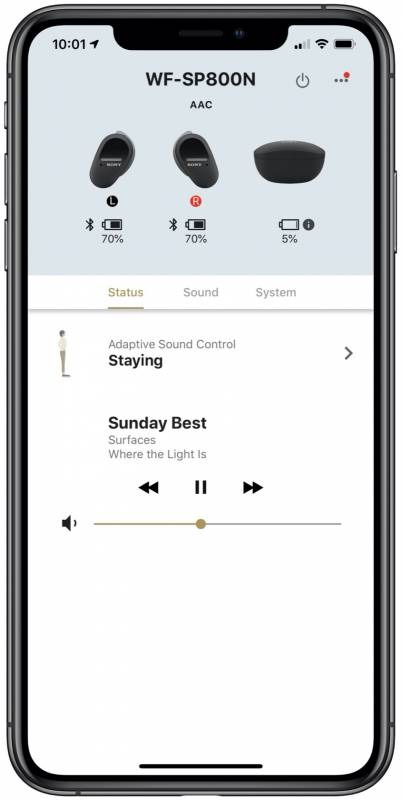
Unsurprisingly, the WF-1000XM3 do sound better: the QN1e processor does a lot of heavy lifting there, including upsampling lesser-quality music. Things are slightly less rich and sparkly with the SP800N, but it's a small step down. You still get plenty of detail, and the Extra Bass doesn't overwhelm. The broad soundstage that so impresses on the more expensive pair has been carried over, too.
For calls, meanwhile, background noise was well squashed in my experience.
Control and App
Like the WF-1000XM3, the SP800N have a touch panel on each earbud. By default, tapping the left briefly switches to Ambient mode, while tapping-and-holding temporarily bypasses the ANC when you just need to quickly respond.
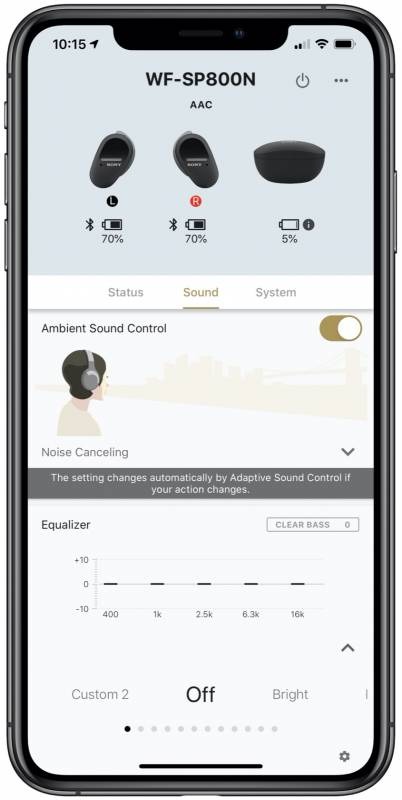
Tapping the right earbud, meanwhile, toggles play/pause. Two taps skips forward; three skips back. Tapping-and-holding triggers your phone's voice assistant of choice, either Siri or the Google Assistant. Out of the box there's no way to control volume from the earbuds themselves, but you'll be able to customize the controls in the Headphones app, including assigning volume to one or both 'buds.
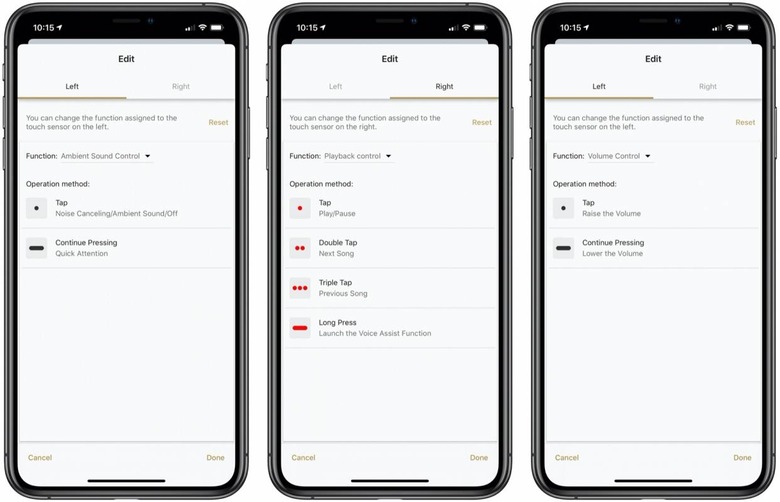
Sensors automatically pause music playback when you take an earbud out, and resume it when you slot it back in again. There's also a feature in the Headphones app which allows you to register certain locations and have the earbuds' settings – like ANC and EQ profile – change automatically when you're there. At home, for example, you could have maximum noise cancellation to drown out your family; when you're in the park, you could have Ambient Mode automatically switch on for some situational awareness.
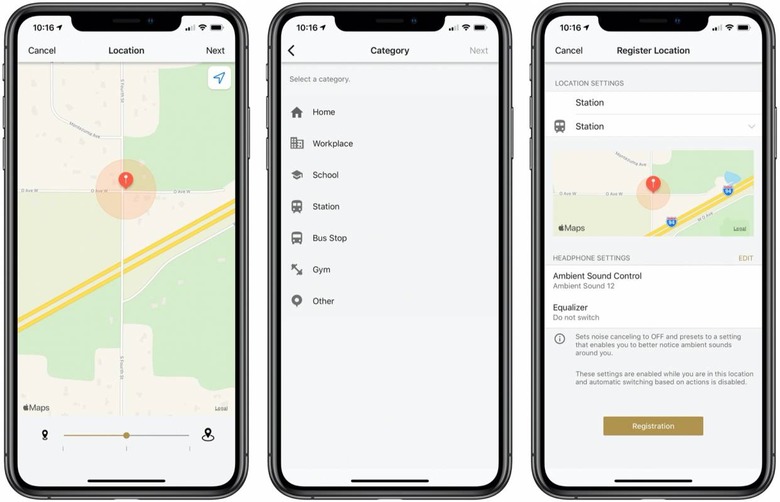
Sony WF-SP800N Verdict
To get more battery life, still include ANC and great sound, waterproofing, and all at a lower price, Sony obviously had to make a few compromises in the WF-SP800N. What's impressive is just how minor most of those compromises actually feel in practice.
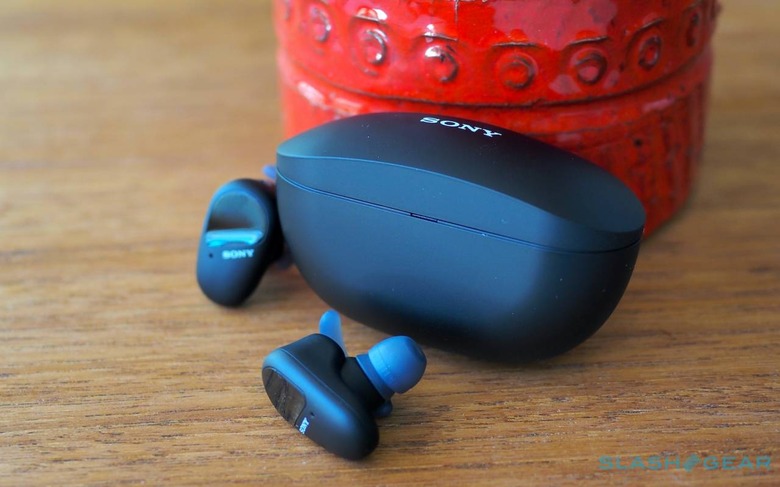
If I was focused on solely listening to music in one space, I'd opt for the WF-1000XM3. As soon as you start to think about working out, though, or listening to music when there's a chance of rain, the SP800N's advantages become clear. Sure, there's a dip in noise cancellation and music performance, but it's much less noticeable than I expected.
This isn't quite a clean-sweep for Sony. No multipoint pairing leaves you manually switching between Bluetooth devices, and the earbuds are a little bulky and protrude from the ear. Nonetheless, for the amount that Sony is squeezing in – not least that great battery life – the $200 price tag seems more than justified.
